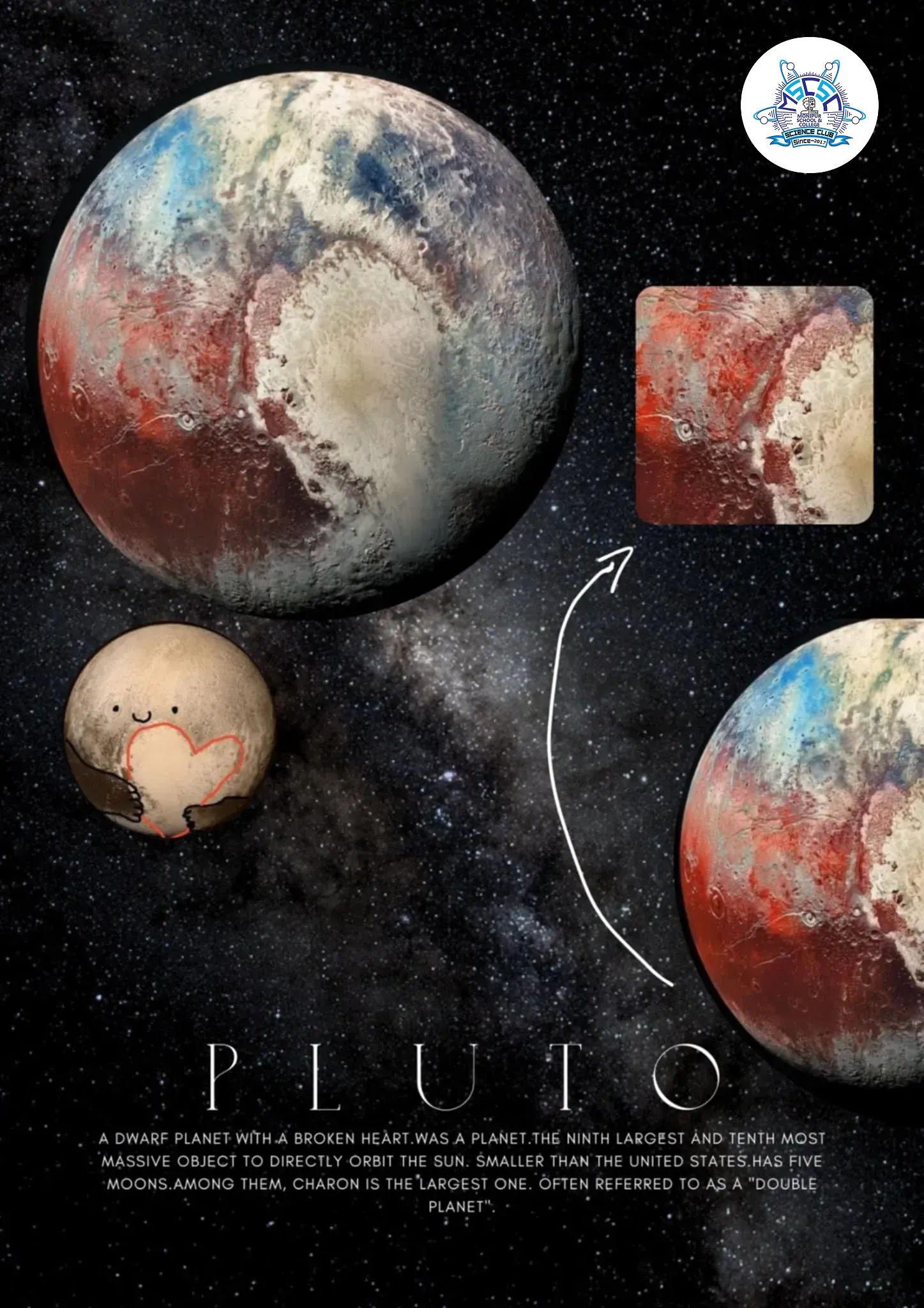
View full image
Pluto, a dwarf planet in the Kuiper belt
Pluto is a dwarf planet in the Kuiper Belt, made of ice and rock, and was a planet until 2006. It’s small, cold, and has five moons, including Charon. Its orbit is elliptical and tilted, and it spins on its side. Many still debate its status, but it's officially a dwarf planet.
Pluto is a dwarf planet in the Kuiper belt, a ring of bodies beyond the orbit of Neptune. It’s a complex and mysterious world with mountains, valleys, plains, craters, and glaciers. It’s the ninth-largest and tenth-most-massive known object to directly orbit the Sun. It was discovered in 1930. It was named by an 11-year-old girl. Pluto stopped being a planet in 2006 when it was reclassified as a dwarf planet, a demotion that attracted controversy and stirred debate in the scientific community and among the general public. Like other Kuiper belt objects, Pluto is made primarily of ice and rock and is much smaller than the inner planets. It has roughly one-sixth the mass of the Moon and one-third its volume. It’s only about 1,400 miles wide. At that small size, it’s only about half the width of the United States. It's about 3.6 billion miles away from the Sun, and it has a thin atmosphere composed mostly of nitrogen, methane, and carbon monoxide. On average, Pluto’s temperature is -387°F (-232°C), making it too cold to sustain life. Pluto is orbited by five known moons, the largest of which is Charon. Charon is about half the size of Pluto itself, making it the largest satellite relative to the planet it orbits in our solar system. Pluto and Charon are often referred to as a “double planet.” Pluto's orbit around the Sun is unusual compared to the planets: it's both elliptical and tilted. Pluto's 248-year-long, oval-shaped orbit can take it as far as 49.3 astronomical units (AU) from the Sun and as close as 30 AU. (One AU is the mean distance between Earth and the Sun: about 93 million miles or 150 million kilometers.) But on average, Pluto is 3.7 billion miles (5.9 billion kilometers) away from the Sun, or 39 AU. From 1979 to 1999, Pluto was near perihelion, when it was closest to the Sun. During this time, Pluto was actually closer to the Sun than Neptune. One day on Pluto takes about 153 hours. Its axis of rotation is tilted 57 degrees with respect to the plane of its orbit around the Sun, so it spins almost on its side. Pluto also exhibits a retrograde rotation, spinning from east to west like Venus and Uranus.
The most important fact to remember is that Pluto is currently considered to be a dwarf planet and is not considered to be a planet. Pluto was considered to be a planet until 2006. There are three criteria that planets must meet in order to be considered a planet. Pluto only meets two of the three criteria currently in place. Many scientists believe that Pluto should still be considered a planet, but until the criteria are reconsidered, Pluto will remain a dwarf planet.
Written by: Fayruj Humayra Binta Hashib (2026)